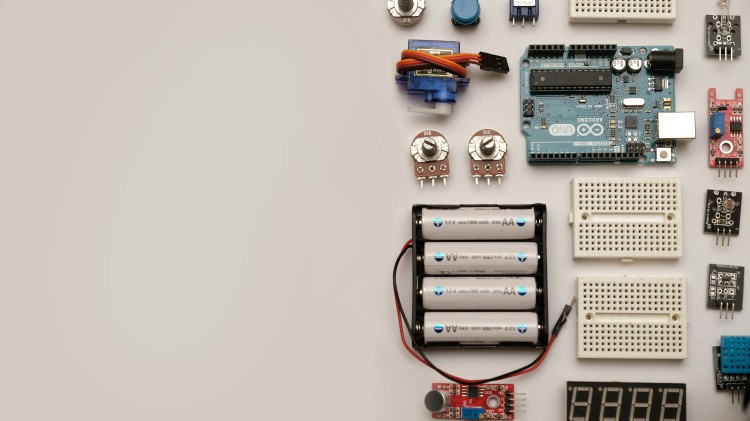Identify Counterfeit Batteries - Start With A 26650 Battery

1. Introduction: The Rise of Counterfeit Battery Scams
Counterfeit batteries are a growing problem in today’s market. They pose serious risks to consumer safety and device performance. Recently, we decided to purchase a torch from eBay, only to discover that the battery included was a fake. This experience highlighted the importance of understanding and identifying counterfeit batteries to avoid potential hazards.
In this article, we will share our experience with fake batteries. We will also discuss the bigger issues related to this problem. Finally, we will give tips on how to spot and avoid counterfeit batteries.
2. Personal Experience: Unpacking the Scam
Recently, we decided to buy a flashlight from eBay. We had bought one before that was old and broken. We hoped this new flashlight would be better.
However, upon receiving the torch, we found the 26650 battery to be completely dead. After charging it for half an hour with no success, we measured its voltage and found it to be negative. Suspecting foul play, we decided to open the battery casing, despite the risks involved.
To our surprise, we discovered a smaller, lower-capacity battery hidden inside the larger casing. This confirmed our suspicion that the battery was a counterfeit.
This experience was both surprising and concerning. It showed how far scammers will go to trick consumers. It also underscored the importance of being vigilant when purchasing batteries online.
3. The Scope of the Problem: A Global Perspective
Our personal experience is not an isolated incident. The FBIand other authoritative bodies have issued warnings about the prevalence of counterfeit batteries. According to these warnings, counterfeit batteries can lead to product damage, poor performance, and even serious injuries. The global supply chain vulnerabilities have allowed scammers to flood the market with fake batteries, making it difficult for consumers to distinguish between genuine and counterfeit products.
The impact of counterfeit batteries extends beyond individual consumers. There have been numerous reports of injuries and property damage caused by overheating and exploding counterfeit batteries. These incidents highlight the need for greater awareness and stricter regulations to curb the spread of fake batteries.
4. Identifying Counterfeit Batteries: Key Indicators
Identifying counterfeit batteries can be challenging, but there are several key indicators to look out for. Visual inspection is the first step. Check the packaging for any signs of tampering, such as misprinted or misspelled labels, labels that peel off easily, or the absence of official manufacturer batch numbers. Genuine batteries are typically well-packaged and have clear, accurate labeling.
Another method is to weigh the battery. Counterfeit batteries often weigh less than their genuine counterparts due to the use of inferior materials. Performance tests can also help determine authenticity. Genuine batteries will usually perform consistently, whereas counterfeit ones might show erratic behavior or fail to hold a charge.
Spotting rewrapped or repurposed batteries is another crucial skill. If a battery's label appears to have been tampered with or if it looks like a different brand has been covered up, it’s likely a fake. Always purchase batteries from reputable sources to minimize the risk of encountering counterfeit products.
5. The Dangers of Counterfeit Batteries
Counterfeit batteries pose several potential hazards, including overheating, fires, and explosions. These risks are not just theoretical; there have been numerous documented cases where fake batteries have caused severe damage and injuries. For instance, a counterfeit battery in a smartphone can overheat and catch fire, potentially causing burns or even more severe injuries.
The impact on device performance and longevity is another significant concern. Counterfeit batteries often have lower capacities and degrade faster than genuine ones, leading to frequent replacements and potential damage to the device itself. This not only incurs additional costs but also poses a risk to the user’s safety.
Health and safety risks for consumers are paramount. Using a fake battery can lead to exposure to harmful chemicals if the battery leaks or explodes. It’s crucial to recognize these dangers and take preventive measures to avoid them.
6. The Economics Behind Counterfeit Batteries
How do counterfeit batteries infiltrate the market? The answer lies in global supply chain vulnerabilities. Scammers exploit these weaknesses to distribute fake products widely. The economic incentives for scammers are significant, as counterfeit batteries can be produced cheaply and sold at a high markup.
The cost to consumers is not just financial. The risks associated with counterfeit batteries can lead to personal injury, property damage, and increased expenses due to frequent replacements. Understanding the economics behind this issue can help consumers make informed decisions and avoid falling victim to scams.
7. Preventative Measures and Consumer Tips
How can you avoid purchasing counterfeit batteries? Here are some tips:
1. Purchase from Reputable Sources: Always buy batteries from authorized dealers or directly from the manufacturer’s website.
2. Verify Authenticity: Check for official manufacturer batch numbers and other authenticity markers.
3. Be Cautious of Price: If a deal seems too good to be true, it probably is.
8. Staying Vigilant
Counterfeit batteries pose significant risks to both consumer safety and device functionality. Our personal experience, along with numerous reported incidents, underscores the importance of being vigilant when purchasing batteries. By staying informed and following the tips provided, we can protect ourselves from the dangers of counterfeit products.
Awareness is our first line of defense. Understanding the key indicators of counterfeit batteries and knowing where to purchase genuine products can make a significant difference. Additionally, reporting suspected counterfeit products helps authorities and manufacturers take action against scammers, making the market safer for everyone.
In conclusion, the fight against counterfeit batteries requires a collective effort. Consumers, manufacturers, and regulatory bodies must work together to raise awareness and enforce stricter regulations. By doing so, we can reduce the prevalence of counterfeit batteries and ensure our devices remain safe and functional.
So, are you ready to join the fight against counterfeit batteries? Stay informed, stay vigilant, and together, we can make a difference.

